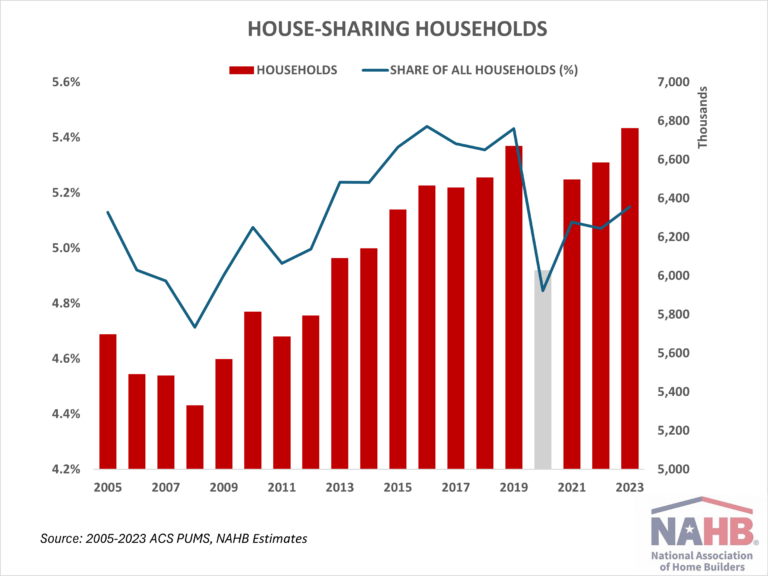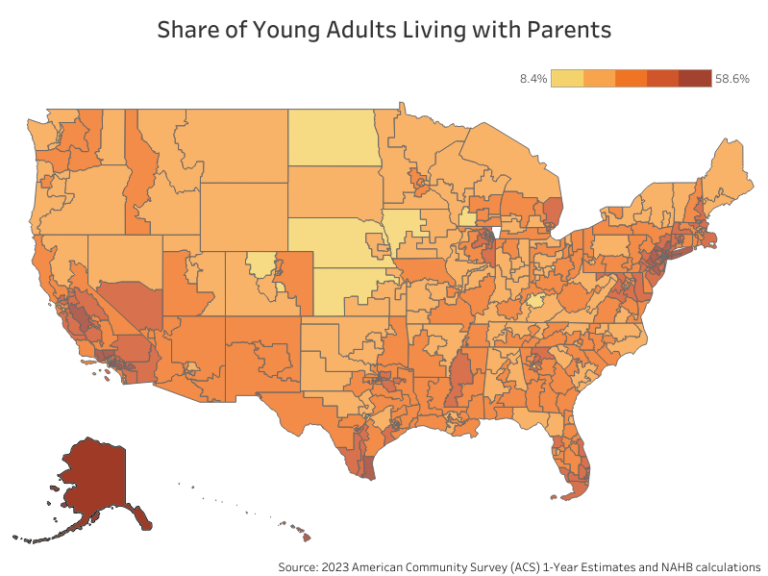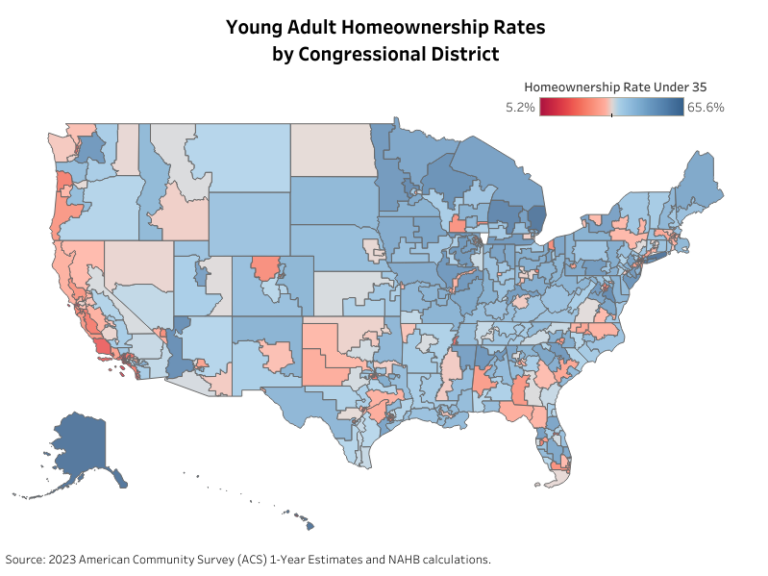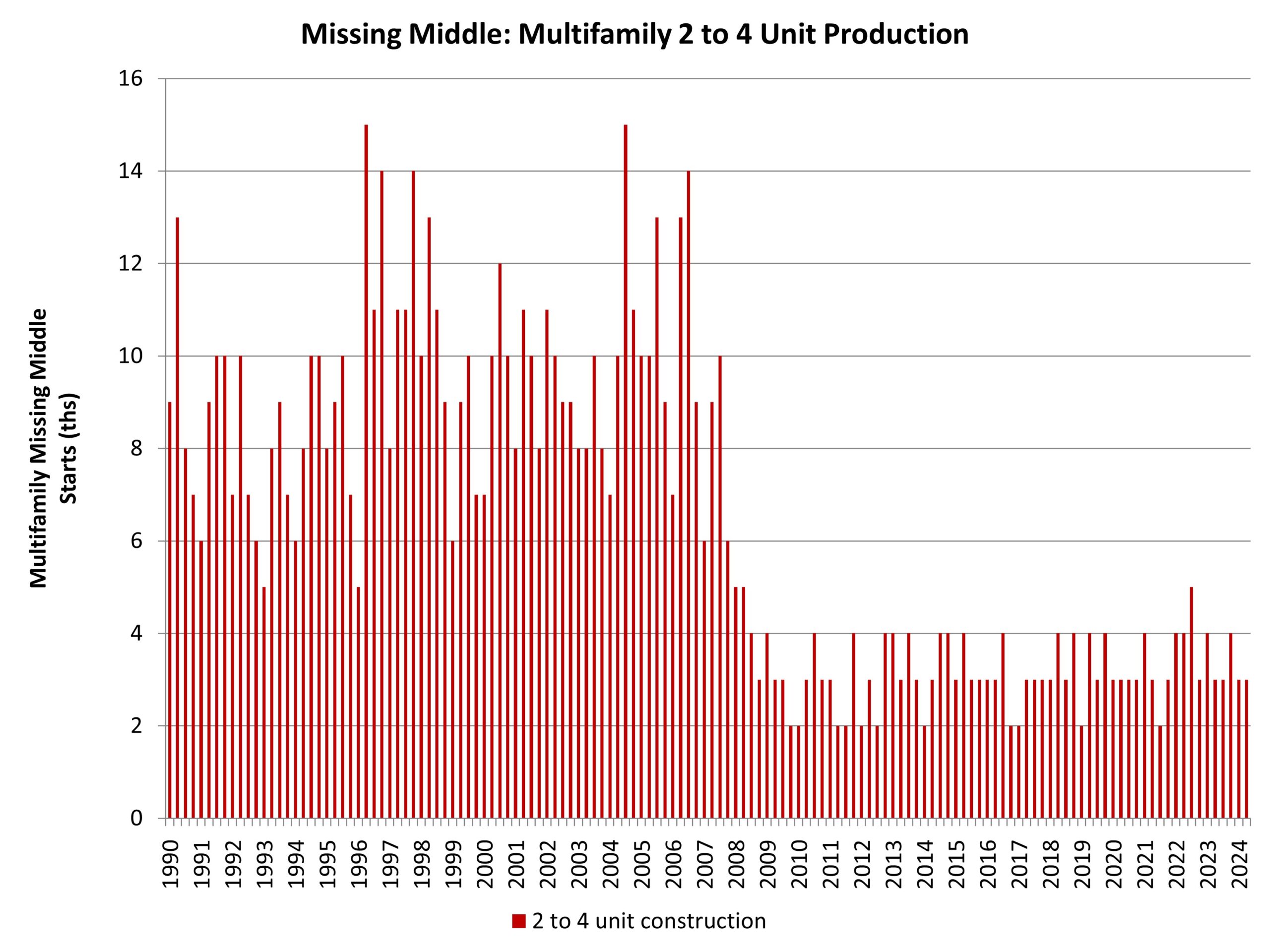A record-high 6.8 million households shared their housing with unrelated housemates, roommates or boarders in 2023. While college-age and young adults make up the largest subset of house sharers (close to 41%), this type of living arrangement is gaining popularity among older householders fastest, with the 55+ segment accounting for 30% of all house-sharing households in 2023.
The number of households sharing housing with nonrelatives had been rising steadily since the 2008 housing crash until the COVID-19 pandemic interrupted the upward trend. During that period, the count of households with at least one unrelated member increased from 5.3 million in 2008 to over 6.7 million in 2019. At the same time, the percentage of house-sharing households grew from 4.7% to 5.4%.
The pandemic dramatically redefined living arrangement preferences. Reflecting the shift towards more spacious, lower-density independent living, the number and percentage of house-sharers collapsed in 2020 (although the data collection issues during the lockdown stages of the COVID-19 pandemic make the 2020 estimates less reliable). While the percentage of households sharing housing has climbed since the pandemic lows, it remains below the 2019 peak. However, the count of house-sharing households in the U.S. is now at a new record-high point. This is largely reflective of a faster household formation rate since the end of the pandemic, as well as the growing popularity of home sharing arrangements.
Young Adults (25-34)
Young adults in the 25-34 age group make up the largest (close to 1.6 million, or 23%) cohort of households that share housing with unrelated housemates. Over the last two decades, amid the rising housing burdens and cost of living, house sharing became a way for young adults to afford to leave parental homes. From 2005 to 2017, as the headship rates for this age group declined precipitously and millions of young adults dropped out of the housing market, house sharing became more common among those who managed to stay out of parental homes. In 2017, when 25 to 34-year-old adults registered record low headship rates, one in eleven householders in this age group shared housing with unrelated housemates. By 2023, when the headship rates rebounded, the share of 25 to 34-year-old house-sharing householders dropped to 7.9%, on par with the 2005 reading.
While it is tempting to assume that the high prevalence of house sharing among young adults reflects a rise in unmarried partnerships, these are not considered house-sharers in this analysis. Unmarried partners tend to function as a unit similar to a married couple, dividing their economic, social and financial responsibilities, and not just those related to house-sharing. To differentiate between these different demographic trends, unmarried partnerships are counted as independent households for the purposes of this analysis.
College-Age Adults (18-24)
College-age adults make up the second largest group of house-sharing householders (1.2 million, or 17%). While the total counts are substantial, they represent a decline since 2005 when 1.3 million 18 to 24-year-old householders shared housing with unrelated roommates, accounting for 22% of house-sharing households. The lower counts of house sharers in this age group reflect, among other factors, the rising share of college-age adults living with parents, declining rates of college attendance in recent years, as well as slower youth population growth. Nevertheless, the youngest householders remain the age group that is most likely to share housing. As of 2023, over one in five leaseholders/homeowners in the 18-24 age group shared housing with unrelated roommates or housemates.
Older Adults 55+
Older adults ages 55 and over registered the most substantial gains in house-sharing arrangements since the housing boom of the mid-2000s[1]. The number of households lead by 55 to 64-year-old adults that shared housing almost doubled since 2005 to 1 million. Their segment increased from 9% of house-sharing households in 2005 to 14% in 2023. At the same time, the number of house-sharers among 65+ householders increased 2.7 times. These oldest householders now account for over a million, or 15% of all house-sharing households, more than doubling their share of 6.8% in 2005.
Partially, the surge in the number of older households sharing housing with nonrelatives simply reflects the aging U.S. population with numerous baby boomers filling the ranks of 55+ households. Partially, it captures the changing preferences, as the older householders are now more likely to live with unrelated members. In 2005, 3% of 55 to 64-year-old householders shared housing with nonrelatives. This share increased to 3.6% in 2013 and continued its climb to 4.1% in 2023. The increase in the percentage of 65+ householders sharing housing was similarly persistent, rising from 1.7% in 2005, to 2.3% in 2013, and climbing further to reach 2.8% in 2023.
Unlike the rates of house-sharing among younger adults, the rates for the 55+ age group appear less cyclical. While still largely unconventional among 55 and older householders, house sharing is on the rise, potentially offering a cost-effective option for older adults to stay in place as they age.
Discover more from Eye On Housing
Subscribe to get the latest posts sent to your email.




